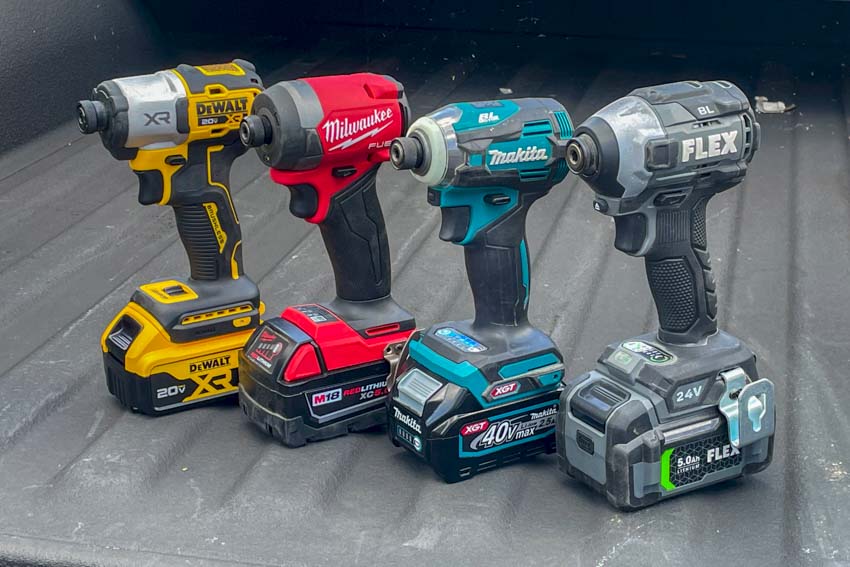Views: 2
Milwaukee is better for raw power and innovation; Makita shines in ergonomics and value.
If you are asking is makita or milwaukee better, the honest answer depends on your work, your hands, and your budget. I’ve used both brands for years on jobsites and in the shop. In this guide, I break down performance, batteries, comfort, warranties, and price with real-world tips. Stick around and you will know exactly which platform fits your work today and tomorrow.
Contents
- Makita vs Milwaukee at a glance
- Battery ecosystems and charging
- Power and performance in the real world
- Ergonomics and user experience
- Durability and jobsite toughness
- Value, price, and total cost of ownership
- Best picks by trade and task
- Warranty, service, and support
- What I have learned after years on site
- Buyer’s checklist to make the right call
- Frequently Asked Questions of is makita or milwaukee better
- Conclusion
Makita vs Milwaukee at a glance
Both Makita and Milwaukee build pro-grade tools. Both have wide ecosystems and loyal fans. But they do not feel the same in hand, and they do not price the same across kits.
- Milwaukee focus: high power, fast innovation, smart batteries, and a huge M12 and M18 lineup.
- Makita focus: smooth ergonomics, balanced weight, quiet motors, and strong value bundles.
- If you ask is makita or milwaukee better for raw power, Milwaukee usually wins.
- If you ask is makita or milwaukee better for comfort and price, Makita often wins.
From my work, Milwaukee pushes the edge on heavy tasks. Makita keeps me fresh on long days with less fatigue. If you still wonder is makita or milwaukee better for your mix of tasks, keep reading.

Battery ecosystems and charging
Batteries lock you into a platform, so choose with care. Milwaukee runs M12 for compact tools and M18 for most pro gear. Its High Output packs use better cells and cooling to cut voltage sag under load. That helps grinders, saws, and high-torque tools.
Makita runs LXT 18V for a massive catalog and XGT 40V Max for high-demand tools. XGT gives more headroom for heavy cuts and large bits. LXT remains the sweet spot for weight and balance.
- Milwaukee M18: huge selection, strong high-output packs, great cold-weather performance.
- Makita LXT: light, well balanced, long runtime in compact sizes.
- Makita XGT: serious power for cutting, drilling, and grinding big stock.
- Charging: Milwaukee Rapid chargers are fast and gentle; Makita’s DC chargers are quick and quiet.
Independent lab tests show Milwaukee’s high-output packs hold voltage under load very well. Field use shows Makita’s XGT packs stay cool under long cuts. If your key question is is makita or milwaukee better for a long-term battery plan, think about which lineup covers all your future tools.
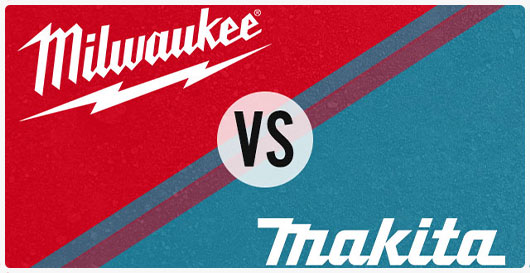
Power and performance in the real world
For brute force, Milwaukee tends to top charts. Its flagship hammer drills, impact wrenches, and grinders are hard to beat. Many head-to-head tests show faster time-to-bore and faster material removal. This matters when you need speed and repeatable power.
Makita is no slouch. Brushless LXT and XGT tools feel smooth and controlled. Impacts hit fast with crisp triggers. I notice less chatter in thin metal and fewer cam-outs.
- Heavy drilling in concrete or large auger bits: Milwaukee often feels stronger.
- Precision driving in cabinets or finish work: Makita control is excellent.
- Grinders and circular saws on thick stock: both do well; XGT and Milwaukee HO shine.
Ask yourself is makita or milwaukee better for the exact tasks you do most. Raw numbers matter, but control and consistency save time and reduce mistakes.

Ergonomics and user experience
You feel the difference right away. Makita grips are slim and neutral. Triggers are smooth. Tools balance well with 2.0–5.0Ah packs. On long days, that balance lowers fatigue.
Milwaukee handles are a bit more aggressive. Power is instant, which is great for tough cuts. Some tools feel nose-heavy with big packs, but the trade-off is speed.
- Makita: lower vibration feel, quiet motors, great for all-day driving.
- Milwaukee: crisp power delivery, more front-heavy with big batteries, strong rafter hooks and features.
- Controls: both have clear mode settings; Milwaukee often adds more smart modes.
If comfort matters most, is makita or milwaukee better leans Makita. If you like tools that jump when you pull the trigger, you may prefer Milwaukee.

Durability and jobsite toughness
Both brands are jobsite-tough. Milwaukee housings and gearcases feel rugged and ready for abuse. Their rubber overmolds hold up well. Makita uses XPT for dust and water resistance, which helps in masonry and outdoor work.
I have dropped both from ladders. Casings scuffed, but both kept working. Long-term, keep vents clean and avoid baking packs in hot trucks. That extends life for any brand.
- Milwaukee: excellent in cold, heavy demo, and metal work.
- Makita: excellent in dusty wood shops and outdoor trim.
- Both: survive rain splashes and dust when used with care.
If your question is is makita or milwaukee better for harsh sites, both are safe picks, with a slight nod to Milwaukee for brute abuse.

Value, price, and total cost of ownership
Makita often wins on price for kits and bundles. You can build a full LXT setup at a lower cost. XGT tools cost more, but deals pop up.
Milwaukee commands a premium. The price reflects power and the giant ecosystem. Resale is strong, and batteries hold value.
- Want the best deal now: watch Makita combo kits with 2–3 tools and two batteries.
- Want the widest future choices: invest in Milwaukee M18 and add tools over time.
- Tip: Total cost = tool price + spare batteries + chargers + must-have accessories.
If your wallet decides, is makita or milwaukee better often points to Makita. If time is money and you want max speed, Milwaukee can pay off on the job.
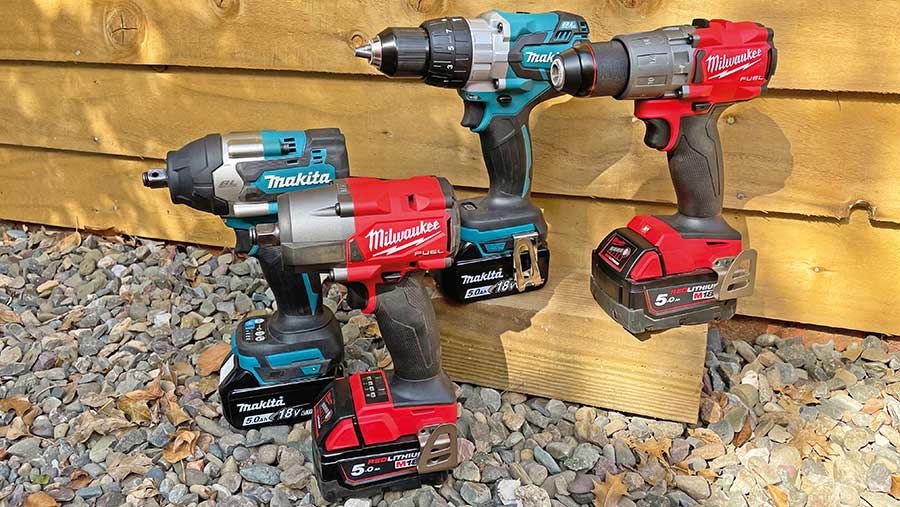
Best picks by trade and task
Your work should guide your pick. Start with the tools you use daily. Then look at the rest of the catalog for growth.
- Electricians: Milwaukee for knockout sets, band saws, and compact M12 tools. Makita for quiet drivers and compact impacts.
- Carpenters and framers: Milwaukee for high-torque drills and framing saws. Makita for trim, finish, and track saw elegance.
- HVAC and plumbers: Milwaukee for press tools and compact right-angle solutions. Makita for smooth drilling and reliable drivers.
- DIY and homeowners: Makita LXT for value kits. Milwaukee M12 for small, handy tools around the house.
For each trade, ask is makita or milwaukee better for the one tool you cannot live without. Build from that anchor tool.

Warranty, service, and support
Service matters when tools fail. Milwaukee offers a strong 5-year tool warranty and about 3 years on many batteries. Service centers are common, and repair parts are easy to find. Turnaround is usually quick.
Makita offers a 3-year limited warranty on many tools and batteries. Their service network is solid, and parts support is good. Response times vary by region.
If coverage length decides it for you, you might say Milwaukee. But if you find a local Makita service center you trust, that may tip the scale. For many buyers asking is makita or milwaukee better, local support is the tiebreaker.
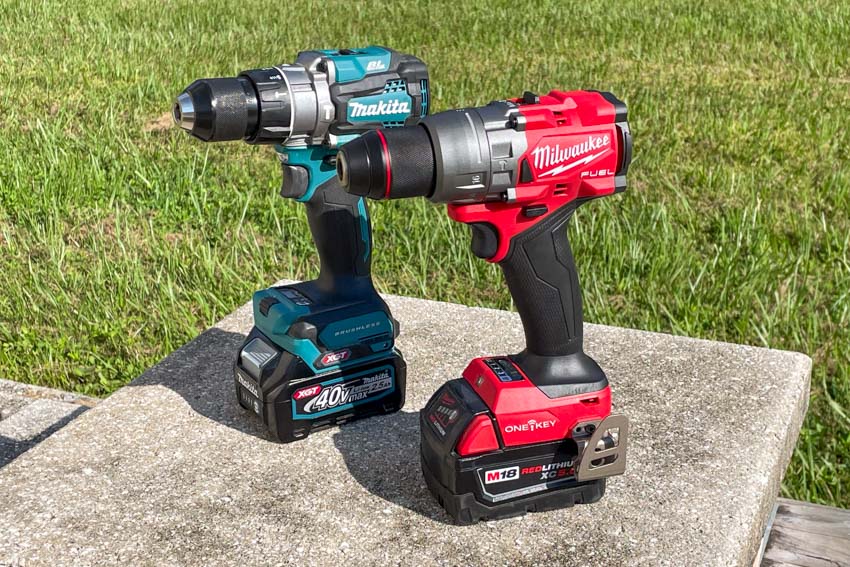
What I have learned after years on site
I have driven thousands of screws in softwood, hardwood, and sheet metal. Milwaukee saves time on big holes and demo. Makita saves my wrists and ears on long install days. That is the honest trade.
Mistakes to avoid:
- Jumping into two platforms at once and splitting your battery budget.
- Buying a huge kit you will not use. Start with your core tools.
- Skipping spare batteries. Two packs per user is the minimum.
Practical tips:
- Match battery size to the task. Use compact packs for overhead work.
- Keep chargers where you work most. Downtime kills productivity.
- Try the grip in person. Hands are different; comfort is personal.
These lessons shape how I answer is makita or milwaukee better for friends and crews. Fit the platform to your work, not the other way around.

Buyer’s checklist to make the right call
Use this quick list before you buy. It makes the choice simple and clear.
- Core tasks: list the three things you do most.
- Anchor tool: pick the one tool that must be best-in-class.
- Ecosystem: confirm the brand has at least five future tools you want.
- Batteries: plan for at least two packs per user and one rapid charger.
- Ergonomics: test grip, balance, and weight with the battery you will use.
- Support: check local service and warranty terms.
- Budget: compare kit bundles and promos, not just bare tool prices.
If you work heavy and fast, you may say Milwaukee. If you want comfort and value, you may say Makita. The key is to ask is makita or milwaukee better for your real day, not a spec sheet.
Frequently Asked Questions of is makita or milwaukee better
Which brand has more power for heavy-duty work?
Milwaukee usually has the edge in high-demand tools like grinders and big drills. It pushes harder under load and holds speed well.
Which batteries last longer, Makita or Milwaukee?
Runtime is close when capacity matches. Milwaukee High Output packs and Makita XGT packs both perform well under load.
Is Makita better for beginners or DIY?
Yes, Makita LXT kits offer strong value and smooth control. They are great for learning good technique without fatigue.
Do both brands have compact tools for tight spaces?
Yes. Milwaukee M12 is excellent for small, light tasks, and Makita has great sub-compact LXT tools. Both fit tight spots.
Which platform grows better over time?
Milwaukee has a larger ecosystem and frequent new releases. Makita still expands fast, especially in XGT for heavy work.
Are warranties very different between the two?
Milwaukee often offers a longer tool warranty. Makita coverage is solid but usually shorter; check local terms.
Conclusion
Both brands make elite tools that can carry your work for years. Milwaukee leads in raw power, innovation, and breadth. Makita leads in ergonomics, balance, and bundle value. Your answer to is makita or milwaukee better should match the tasks you do daily, the comfort you need, and the tools you plan to add next.
Pick your anchor tool, try the grip, and price a starter kit with two batteries. Then commit and build. If this guide helped, subscribe for more hands-on tool advice or drop a comment with your setup and what you want to tackle next.

